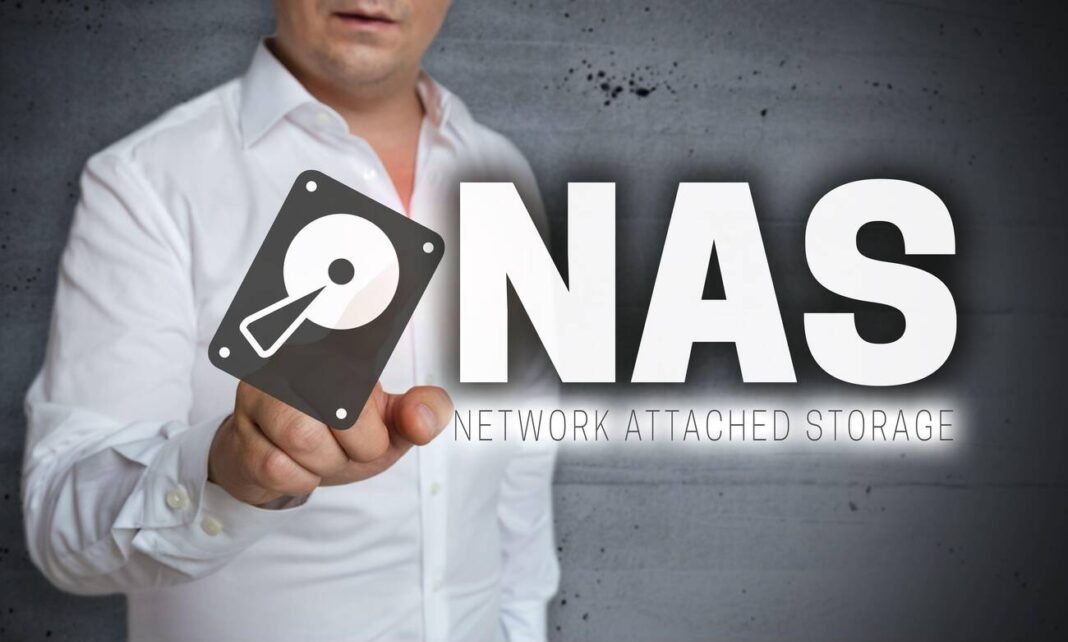Introduction
Network attached storage (NAS) has become a cornerstone for individual and enterprise data storage. These devices offer a centralized storage solution, enabling seamless access and sharing of data across a network. Securely backing up and storing data on NAS devices protects against data loss and ensures accessibility when needed. However, with the rise in cyber threats, securing your NAS has never been more critical.
Proper NAS security involves a combination of primary and advanced measures to safeguard valuable data, mitigate risks, and ensure smooth operations. Here, we explore tips and best practices for enhancing NAS security in 2024, aligning with the latest technological advancements and threat landscapes.
Why NAS Security is Crucial
The global reliance on NAS solutions for data storage is increasing due to the need for accessibility and scalability. However, this has attracted cybercriminals who view NAS devices as valuable information. Recent high-profile security breaches have highlighted vulnerabilities, resulting in significant data loss and financial damage. Proactive measures are crucial to prevent potential disasters and protect NAS devices.
Basic Security Measures
Ensuring the security of your NAS begins with basic precautions, which form the foundation of a robust security strategy. Here are some essential steps to consider:
- Keep Firmware and Software Updated: Regular updates help patch known vulnerabilities and are crucial for maintaining system security. NAS firmware and related software may be kept up to date to lower significantly the danger of a breach since manufacturers often offer updates that fix security problems.
- Use Strong, Unique Passwords: Avoid default passwords and combine letters, numbers, and symbols. A strong password is the first line of defense against unauthorized access. Ensure passwords are changed regularly and differ from those used for other devices or accounts.
- Enable Two-Factor Authentication (2FA): 2FA offers an additional layer of security and makes it more difficult for hackers to get access by demanding a second form of identity. An authentication app or a code delivered to a mobile device might provide an extra security checkpoint.
Advanced Security Practices
To further bolster NAS security, consider implementing advanced measures that go beyond basic protections:
- Use encryption: Data encrypted both in transit and at rest is guaranteed unreadable by unauthorized users, even if it is intercepted or accessed illegally. You can use built-in encryption tools provided by NAS manufacturers or third-party encryption software to achieve this level of security.
- Set Up Virtual Private Networks (VPNs): VPNs ensure secure remote access to your NAS, which is particularly important given the increase in remote work setups. A VPN encrypts the internet connection, making it difficult for attackers to intercept data as it travels between your NAS and remote users.
- Implement Role-Based Access Control (RBAC): Limiting access based on user roles minimizes the risk of unauthorized data access. With RBAC, permissions are assigned according to the user’s role within the organization, ensuring that users only have access to the data necessary for their job functions.
Monitoring and Regular Audits
Regular monitoring and security audits are essential for maintaining NAS security:
- Regular Security Audits: Periodically evaluating your security measures helps identify and rectify vulnerabilities. Conduct thorough audits to assess the effectiveness of current security protocols and uncover any weaknesses that need addressing.
- Monitoring Tools and Software: Use technologies that offer alerts and real-time monitoring for any security risks. These tools can track unusual activities, unauthorized access attempts, and other indicators of a security breach, enabling fast response to incidents.
- Steps to Conduct an Audit: Review access logs, check for irregular activities, and verify that all security settings are appropriately configured. Comprehensive audits involve testing for vulnerabilities, reviewing user privileges, and ensuring compliance with security policies.
Backup Strategies
Effective backup strategies are essential to NAS security, ensuring that data remains safe and recoverable:
- Importance of Regular Backups: Regular backups ensure you have a recovery point in case of data loss. Scheduling regular backups helps mitigate the impact of data breaches, hardware failures, or other disruptions by providing a way to restore data to a previous state.
- Local vs. Cloud Backups: Both methods have advantages; local backups are faster, while cloud backups are safer in case of physical damage to your NAS. Combining both strategies offers a comprehensive approach, providing quick local recovery options and secure offsite storage.
Human Element in NAS Security
Recognizing the human factor in NAS security is crucial, as many breaches result from user errors or negligence:
- Training Staff: Educating staff about security best practices and potential threats is vital. Frequent training sessions can reduce the possibility of human mistakes by increasing knowledge of phishing schemes, password hygiene, and safe data management techniques.
- Common Human Errors: Identify frequent mistakes, such as weak passwords and downloading malicious content, and implement measures to prevent them. Encouraging the use of password managers and cautioning against clicking suspicious links can significantly enhance security.
- Enforcing Security Policies: Develop and implement comprehensive security policies to ensure everyone follows best practices. Clearly defined policies regarding data handling, access controls, and incident response protocols create a security-conscious culture within the organization.
Future Trends in NAS Security
As technology evolves, staying ahead of emerging trends in NAS security is essential to maintaining a robust defense against threats:
- Advanced Encryption Technologies: Stay updated on the latest encryption methods to enhance data protection. Innovations in encryption technology are continually improving, offering more robust and efficient ways to secure data.
- Artificial Intelligence (AI) in Security: AI-powered technologies can facilitate real-time threat detection and mitigation. These tools can analyze patterns, identify anomalies, and respond to potential threats faster than traditional methods.
- Increased Adoption of Zero Trust Models: Zero Trust security models are gaining traction, emphasizing strict access controls and continuous verification. This model operates on the principle that no one, whether inside or outside the network, should be trusted by default, reducing the risk of unauthorized access.
Conclusion
Adequate NAS security requires a multifaceted approach, combining primary and advanced measures to protect against the ever-evolving landscape of cyber threats. By following the advice given here and paying constant attention to detail, you may significantly improve the security of your NAS devices. Regular updates, encryption, monitoring, and staff training are vital to maintaining robust NAS security. Taking these proactive measures not only safeguards your data but also ensures the reliability and integrity of your NAS environment.


